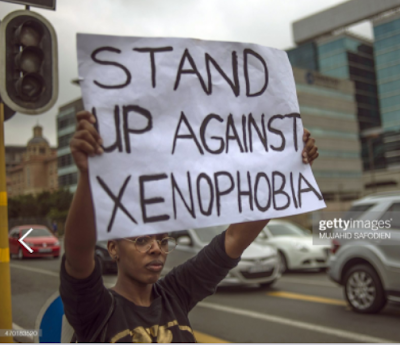Narendra Modi made nationalism
India’s national pastime. The kind of nationalism that he advocates is a very narrow-minded
view which amounts to his personal conviction that India is the greatest
country because he was born in it. Hand in hand with that narcissism walks
xenophobia. Modi’s xenophobia is not so much fear as hatred of the others. He
has succeeded in raising hatred to the stature of a virtue. In 2019, Time reported that 90% of the hate crimes
in the past decade happened during Modi’s reign as PM. Today, three years
later, that figure will be higher, no doubt. 99% of hate crimes in the last decade
in India must have happened with Modi’s tacit support.
In 2016, an
online dictionary cited xenophobia as the word of the year. The ascent of Trump
with his kind of xenophobia is what prompted the dictionary to highlight that
word. Trump hated a whole lot of people. He got along very well with Modi,
however. Similar souls who had many things to hate and few to love.
Xenophobia is
a serious problem in many parts of the world today. While globalisation opened
up the borders of nations, it made many people wary of others who came from
different countries. As Shashi Tharoor writes in his book, The Battle of
Belonging, the complexities of globalisation created a lot of nationalism
and xenophobia. You find their expression “in Brexit and the Hungarians sealing
their borders, both Hindutva in India and the rise of Alternative für
Deutschland in Germany.”
Hindutva hates
not only people of other countries but also the minority communities of its own
country. This kind of xenophobia is nothing new, of course. The 15th
century Spain expelled Muslims and Jews because of xenophobia. The European
conquest of America led to the extermination or enslavement of the native
people. The Americans may pretend to be tolerant and broadminded. But the truth
is that they are as bigoted as any others. They considered the Italian
immigrants as racially inferior. They hated Irish Catholicism. Asians in America
were subjects of many stereotypes. Hate crimes against Asians rose in America by
150% since Covid-19 broke out. Outside America, many of the genocides in 20th
century owed themselves to xenophobia. India has joined that gang of xenophobes
under Modi’s leadership.
There is
something uniquely peculiar to xenophobia in India. It is a kind of entertainment
here. Take this example, one among hundreds. A young man is tied up, bleeding
profusely all over his body, hands folded, and is lynched by a mob that tells
him to chant Jai Sri Ram and Jai Hanuman. Just imagine that
scene. Can you see the fervour of the assaulters as they utter the names of
their gods? Can you feel the horror of it? Can you see the mockery they make of
their religion? This happened in Jharkhand on 22 June 2019. The victim, Tabrez
Ansari, was beaten for hours until he died.
Pardon me for
citing one more example. Two days after the attack on Ansari, a 26-year-old
Muslim teacher was thrown out of a train in West Bengal. His attackers too chanted
Jai Sri Ram.
I can go on
with umpteen such examples. It’s horrifying. But every time I imagine such
scenes, I find a tickle poking me between my ribs subduing my feelings of horror.
The tickle tells me that I live in an India which has become more ludicrous
than horrifying. My India is enjoying the delights of xenophobia.
PS. I am participating in #BlogchatterA2Z
Previous Post: Wiesenthal’s
Revenge
Tomorrow: Yesterday

All I can feel is pain in today's post. Many turning blind eye to such crimes pains me more.....don't know what to do....
ReplyDeleteDropping by from a to z "The Pensive"
It's deeply painful. What pains me more is that the Supreme Pontiff of this system is getting increasingly popular. I find that ludicrously painful.
DeleteSimilar souls.
ReplyDeleteYes. Two hollow narcissists. One was thrown out.
DeleteHari OM
ReplyDeleteIt really does ache deep within, does it not Tomichan? One does despair... YAM xx
X=Xanthic
Yes, Yamini. A thousand yeses.
DeleteBy the way, your comment to my last post disappeared as soon as i responded to it. My response too vanished. Mystery.
Hari Om
DeleteBlogger/Google are trying to 'improve' on something that wasn't broken because it doesn't look current... comments are disappearing, or going to spam, and all sorts of peculiar things. Each day is different - it will settle. Eventually! Yxx
Violence makes me xenophobic. The perpetrators of the violence according me have no religion and unfortunately there are thousands on both sides, all sides of the 'non-violence' line. And no commune, no country in this world is free from such perpetrators.
ReplyDeleteViolence has religion, Anagha. As long as violence is committed in the name of gods, it has religion. To say things like "terrorism has no religion" is to blind ourselves to certain obvious truths.
DeleteReading and watching such events are a big trigger for me like many, but I wonder how is that hate has been so easily able to spread its roots in the masses. Can we always blame the politicians? Why is it that the common man is so blind today?
ReplyDelete